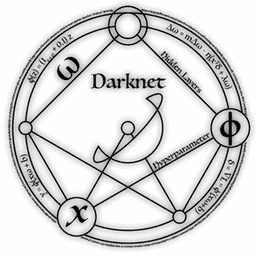The darknet is an often misunderstood collection of websites, networks, protocols and applications that are used for a variety of legitimate and nefarious activities. It often conjures up images of criminal activity and secret societies, but in reality, it serves as a crucial digital medium for both legal and illegal activities. To understand what the darknet is and how it functions, one has to look at its history, the laws and regulations surrounding it, and its curreCrypto Markets
What makes up the Darknet?
Simply put, the darknet is comprised of any technology or service that allows users to share data anonymously and securely. This includes services like Tor, I2P and Freenet, as well as cryptocurrencies like Bitcoin and Ethereum. The darknet can be thought of as a sort of decentralized internet, where users can access content without having to reveal their true identity.
![]()
A Brief History of the Darknet
Darknet technologies have been around since the early days of the internet and have been used by activists, journalists, and whistleblowers alike to protect their privacy. The concept of a “darknet” was first proposed in 1995 by two US Navy cryptographers, and since then, the technology has evolved to include a variety of different types of networks and services. While the technologies used to create the darknet may be old, the term itself is relatively recent, only appearing in popular culture in about 2005.
Crypto Markets on the Darknet
Crypto markets are an integral part of the darknet. These are online marketplaces where buyers and sellers can transact using cryptocurrencies like Bitcoin and Ethereum. These markets offer a safe and anonymous way for users to purchase and sell a wide range of goods and services, including illicit items like drugs, weapons, stolen credit cards, and hacking tools. While there are certainly some legitimate transactions taking place on these markets, they are mostly used by criminals looking to exploit the anonymity afforded by the darknet.
What Laws and Regulations Govern the Darknet?
In terms of regulations and laws, the darknet is treated no differently than the open web. In other words, all the same basic regulations and laws apply, such as copyright and trademark protections, taxation, and anti-trafficking regulations. However, due to the anonymous nature of the darknet, these laws and regulations are difficult to enforce. As a result, many countries have begun cracking down on darknet activities with increased policing, surveillance, and law enforcement.
Are There Any Legitimate Uses of the Darknet?
Not all activity on the darknet is criminal. In fact, many organizations, companies, and individuals rely on the darknet for a variety of legitimate activities. Journalists, whistleblowers, activists, and corporations use the darknet to communicate and share information without fear of being identified or tracked. Additionally, it is increasingly being used for a variety of business purposes, such as setting up virtual private networks, sharing large data sets, and even conducting financial transactions.
Is the Darknet on the Rise or Decline?
Despite growing efforts from law enforcement and governments to crack down on darknet activities, it is still a thriving ecosystem. According to recent research, the darknet is estimated to contain over 25,000 active websites, over 2 million active users, and thousands of vendors offering a variety of goods and services. It is clear that the darknet serves multiple purposes, both legal and illegal, and its popularity is likely to continue in the years ahead.

